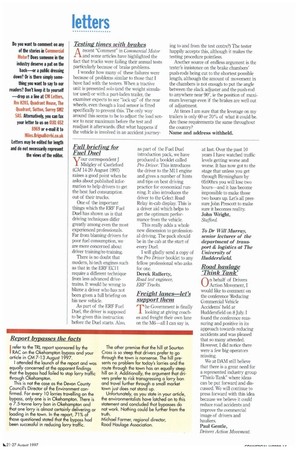Testing times with brakes
Page 17

If you've noticed an error in this article please click here to report it so we can fix it.
A recent "Comment" in Commercial Motor and some articles have highlighted the fact that trucks were failing their annual tests particularly because of brake problems. wonder how many of these failures were because of problems similar to those that I have had with the testers. When a tractive unit is presented solo (and the weight simulator used) or with a part-laden trailer, the examiner expects to see "lock up" of the rear wheels, even though a load sensor is fitted specifically to prevent this. The only way around this seems to be to adjust the load sensor to near maximum before the test and readjust it afterwards. (But what happens if the vehicle is involved in an accident journey
ing to and from the test centre?) The tester happily accepts this, although it makes the testing procedure pointless.
Another source of endless argument is the tester's insistence on the brake chambers' push-rods being cut to the shortest possible length, although the amount of movement in the chambers is not enough to put the angle between the slack adjuster and the push-rod to anywhere near 90°, ie the position of maximum leverage even if the brakes are well out of adjustment.
At times I am sure that the leverage on my trailers is only 60 or 70% of what it could be. Are these requirements the same throughout the country?
Name and address withheld.
































































































